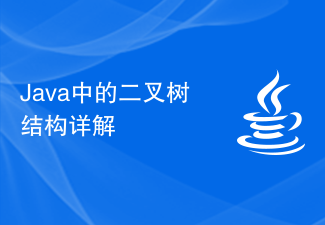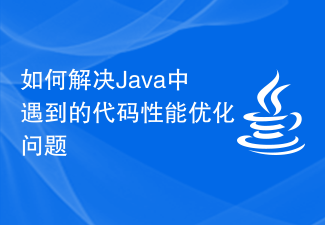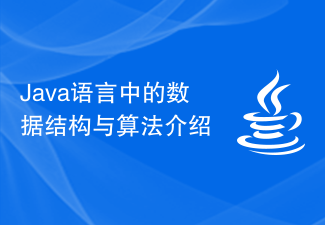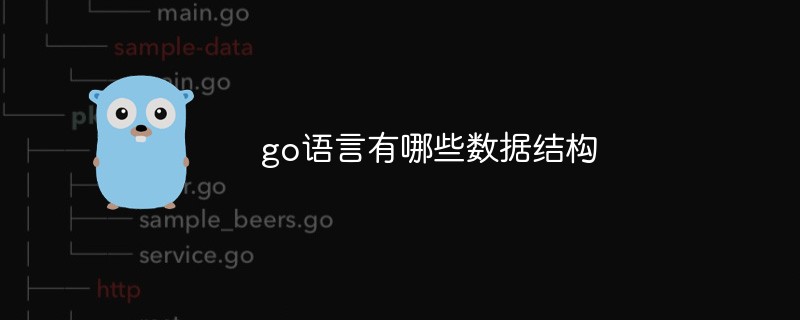 Java
Java javaTutorial
javaTutorial Java collection framework explained in simple terms: Unlock the password of data storage and help code performance leap
Java collection framework explained in simple terms: Unlock the password of data storage and help code performance leap
The Java collection framework is a core part of Java programming and plays a vital role in the storage and operation of data. PHP editor Xigua has carefully prepared this article for everyone, which will unlock the mysteries of the Java collection framework in simple and easy-to-understand terms, help readers better understand and apply the collection framework, improve code performance, and achieve leapfrog progress.
1. List collection class
The List collection class includes ArrayList and LinkedList, both of which implement the List interface. ArrayList is a list implemented based on array and supports fast random access, but array elements need to be moved when inserting and deleting elements, so ArrayList has poor performance when inserting and deleting elements frequently.
LinkedList is a list implemented based on linked list, which supports fast insertion and deletion of elements, but has poor random access performance. Therefore, LinkedList is a better choice in situations where elements need to be inserted and deleted frequently.
2. Set collection class
Set collection class includes HashSet and TreeSet, both of which implement the Set interface. HashSet is a hash table-based set that supports fast lookup of elements, but the order of the elements is undefined.
TreeSet is a set implemented based on red-black trees, supports fast search and sorting, and ensures that the order of elements is ascending or descending order. Therefore, TreeSet is a better choice in situations where you need to find and sort elements quickly.
3. Map collection class
TheMap collection class includes HashMap and TreeMap, both of which implement the Map interface. HashMap is a hash table-based mapping that supports fast search and modification of elements, but the order of the elements is undefined.
TreeMap is a mapping based on red-black trees, which supports fast search and sorting of elements, and ensures that the order of elements is in ascending or descending order. Therefore, TreeMap is a better choice in situations where you need to find and sort elements quickly.
In addition, the Java collection framework also provides other types of collection classes, such as Queue (queue) and Stack (stack), which also have their own characteristics and application scenarios.
4. Tips on using collection framework
In order to give full play to the advantages of the Java collection framework, you need to pay attention to the following tips when using it:
-
Choose the appropriate collection class: Choosing the appropriate collection class based on the characteristics of the data and operational requirements can significantly improve code performance.
-
Use generics: When using collection classes, try to use generics to specify the type of elements. This can improve the readability and maintainability of the code and avoid potential type errors.
-
Pay attention to the threading of collection classesSafety: In the Java collection framework, not all collection classes are thread-safe. In a multi-threaded environment, if you need concurrent access to a collection class, you need to choose a thread-safe collection class, such as ConcurrentHashMap and CopyOnWriteArrayList.
-
Use iterators to traverse collections: When traversing collections, try to use iterators instead of directly using for loops, because iterators provide a more flexible and safer way to traverse.
-
Use the auxiliary methods provided by the collection class: The Java collection framework provides many auxiliary methods that can simplify code writing and improve code efficiency. For example, the Collections.sort() method can sort the collection. The Collections.binarySearch() method can perform a binary search on a collection.
Summarize
The Java collection framework is a powerful and widely used tool in the Javaprogramming language. Mastering the knowledge and usage skills of the collection framework can not only improve the readability and readability of the code Maintainability can also significantly improve code performance. In actualdevelopment, selecting the appropriate collection class based on the characteristics of the data and operational requirements, combined with the usage skills of the collection framework, can significantly improve the quality and efficiency of the code.
The above is the detailed content of Java collection framework explained in simple terms: Unlock the password of data storage and help code performance leap. For more information, please follow other related articles on the PHP Chinese website!
 Java中的二叉树结构详解Jun 16, 2023 am 08:58 AM
Java中的二叉树结构详解Jun 16, 2023 am 08:58 AM二叉树是计算机科学中常见的数据结构,也是Java编程中常用的一种数据结构。本文将详细介绍Java中的二叉树结构。一、什么是二叉树?在计算机科学中,二叉树是一种树形结构,每个节点最多有两个子节点。其中,左侧子节点比父节点小,右侧子节点则比父节点大。在Java编程中,常用二叉树表示排序,搜索以及提高对数据的查询效率。二、Java中的二叉树实现在Java中,二叉树
 Python 实现栈的几种方式及其优劣May 19, 2023 am 09:37 AM
Python 实现栈的几种方式及其优劣May 19, 2023 am 09:37 AM想了解更多关于开源的内容,请访问:51CTO开源基础软件社区https://ost.51cto.com一、栈的概念栈由一系列对象对象组织的一个集合,这些对象的增加和删除操作都遵循一个“后进先出”(LastInFirstOut,LIFO)的原则。在任何时刻只能向栈中插入一个对象,但只能取得或者删除只能在栈顶进行。比如由书构成的栈,唯一露出封面的书就是顶部的那本,为了拿到其他的书,只能移除压在上面的书,如图:栈的实际应用实际上很多应用程序都会用到栈,比如:网络浏览器将最近浏览
 PHP8中会支持的数据结构,将为你的代码提供更大空间Jun 21, 2023 am 08:13 AM
PHP8中会支持的数据结构,将为你的代码提供更大空间Jun 21, 2023 am 08:13 AMPHP是一种广泛使用的脚本语言,被广泛用于Web开发,服务器端编程以及命令行编程等。随着PHP不断更新和发展,它也日益成为一个更强大的编程工具,为用户提供了更多的功能和更多的工具来开发高质量的应用程序。其中,数据结构是一个非常重要的领域,一种有效的数据结构可以大大提高程序的性能和可读性。在这篇文章中,我们将讨论PHP8中支持的新数据结构,这些新的数据结构将让
 如何解决Java中遇到的代码性能优化问题Jun 29, 2023 am 10:13 AM
如何解决Java中遇到的代码性能优化问题Jun 29, 2023 am 10:13 AM如何解决Java中遇到的代码性能优化问题随着现代软件应用的复杂性和数据量的增加,对于代码性能的需求也变得越来越高。在Java开发中,我们经常会遇到一些性能瓶颈,如何解决这些问题成为了开发者们关注的焦点。本文将介绍一些常见的Java代码性能优化问题,并提供一些解决方案。一、避免过多的对象创建和销毁在Java中,对象的创建和销毁是需要耗费资源的。因此,当一个方法
 Java语言中的数据结构与算法介绍Jun 10, 2023 pm 01:37 PM
Java语言中的数据结构与算法介绍Jun 10, 2023 pm 01:37 PM随着计算机科学的不断发展,数据结构与算法成为了计算机科学领域中最为基础、重要的模块。数据结构是一种组织和存储数据的方式,它是解决问题的基础。算法则是计算机科学的核心,它是指在计算机程序中解决问题的方法和技术。Java作为一种广泛应用的编程语言,其自带的数据结构和算法库是非常强大的,赋予了开发人员更多的力量。一、数据结构Java中提供了多种数据结构,包括数组
 go语言有哪些数据结构Dec 16, 2022 pm 02:00 PM
go语言有哪些数据结构Dec 16, 2022 pm 02:00 PMgo语言数据结构有四大类:1、基础类型,包括整型(有符号和无符号整数)、浮点数、复数、字符串(由不可变的字节序列构成)、布尔值(只有true和false两个值);2、聚合类型,包括数组、结构体(是由任意个任意类型的变量组合在一起的数据类型);3、引用类型,包括指针、slice(是一个拥有相同元素的可变长度序列)、map、function、channel;4、接口类型。
 c语言中数据结构是什么?常见数据结构有哪些?Nov 03, 2020 am 11:38 AM
c语言中数据结构是什么?常见数据结构有哪些?Nov 03, 2020 am 11:38 AMc语言中,数据结构是指相互之间存在一种或多种特定关系的数据元素的集合,它是计算机存储、组织数据的方式;常见数据结构有:线性数据结构(数组、链表、栈、队列和线性表)、树形结构(二叉树、完全二叉树、二叉查找树、堆)、图形结构(有向图和无向图)。
 Java语言常见算法实现方法Jun 11, 2023 pm 05:51 PM
Java语言常见算法实现方法Jun 11, 2023 pm 05:51 PMJava语言是目前应用最广泛的编程语言之一,在计算机领域中应用广泛。在Java中,算法是一种非常重要的概念,从最初的排序算法到数据结构和算法的实现,都涉及到了Java语言的一些常用方法。本文将重点讲解Java语言中常见的算法实现方法,包括排序算法、搜索算法、字符串匹配算法以及树形结构的处理方法等,以便初学者更好的掌握Java语言的算法实现。一、排序算法排序算


Hot AI Tools

Undresser.AI Undress
AI-powered app for creating realistic nude photos

AI Clothes Remover
Online AI tool for removing clothes from photos.

Undress AI Tool
Undress images for free

Clothoff.io
AI clothes remover

AI Hentai Generator
Generate AI Hentai for free.

Hot Article

Hot Tools

SublimeText3 Mac version
God-level code editing software (SublimeText3)

SublimeText3 Linux new version
SublimeText3 Linux latest version

SecLists
SecLists is the ultimate security tester's companion. It is a collection of various types of lists that are frequently used during security assessments, all in one place. SecLists helps make security testing more efficient and productive by conveniently providing all the lists a security tester might need. List types include usernames, passwords, URLs, fuzzing payloads, sensitive data patterns, web shells, and more. The tester can simply pull this repository onto a new test machine and he will have access to every type of list he needs.

WebStorm Mac version
Useful JavaScript development tools

SublimeText3 English version
Recommended: Win version, supports code prompts!





